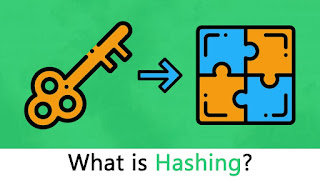Hashing Vs Encryption, Types Of Hashing Functions

Hashing Vs Encryption, Types Of Hashing Functions
Hashing is a function that produces jumbled up texts in only one direction. This means there is no way for us to decrypt the message after they are hashed. On the other hand, with encryption keys are provided with the encryption with which an encrypted message can be decrypted.
A more complex form of encryption is known as asymmetric encryption which is used for encrypting data in transit to protect such data from an attacker. With this type of encryption, a primary key for encrypting the message is provided, and a secondary key for decryption on the other system is also provided.
Types of Hashing Functions Include
- bcrypt
- scrypt
- MD5
- SHA-1
A hash or message digest is the term used to describe the output from a hashing function.
It is pertinent to note that not all hashing functions are created equally. While some hashing functions make use of complex algorithms to create hence more difficult to compromise, others are simpler.
A rainbow table is a type of attack that can be used to compromise a hashed password.
With rainbow tables, a list of common passwords are hashed, and the outputs compared with the hashes. The hash similar to the hashed password is equal to the compromised password.
This is why it advisable to use more complex hashing functions like bcrypt and scrypt.



.png)








I liked your work and the way in which you have shared this blog here Hashing Vs Encryption It is a beneficial and helpful blog for us. Thanks for sharing a blog like this.
ReplyDelete